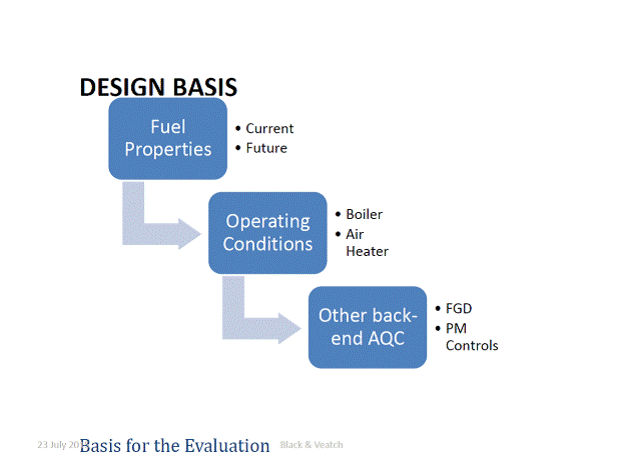
HOT TOPIC HOUR
“Gas Turbine Regulatory Drivers” Hot Topic Hour on February 5
addressed Permitting and Compliance Issues for Gas Turbine Operators
Bob McIlvaine started the discussion with an analysis of the relationship of
regulations and decisions about retirement of coal-fired power plants, partial
replacement or complete replacement with gas turbine systems.
National Ambient Air Quality Standards (NAAQS), emission standards for
greenhouse gases and corresponding State permitting hurdles present many
challenges for power plant operators. A discussion of these issues and ways to
address them were discussed by other speakers.
Regulatory Agenda by Bob McIlvaine,
McIlvaine Company - Hot Topic Hour February 5, 2015.
Bob started the discussion with an analysis of the relationship or regulations
and decisions from retirement of coal-fired power plants, partial replacement or
complete replacement with gas turbine systems.
Revision Date:
2/5/2015
Tags:
221112 - Fossil Fuel
化石燃料,
McIlvaine, Regulation, Greenhouse Gas
Debbie Fox, McIlvaine
Company, provided an overview of regulatory programs that are forcing
changes in how power is generated in the U.S.
For example, many coal-fired power plants will choose to shut down rather
than comply with the Mercury and Air Toxics Standards (MATS). CO2
emission standards for new power plants will effectively prohibit the
construction of any new coal-fired power plants. Accordingly, EIA projects that
73 percent of new capacity in 2013-2040 will be gas-fired (see below). The CO2
standards are also expected to dramatically shift power dispatching priorities
from coal to natural gas, raising the nationwide utilization rate for natural
gas combined cycle units from the current 46% to 70% or more.

Bob Hall and
Jeff Connors of AECOM addressed “Recent Air Permitting
Issues for New Combined Cycle Power Plants.”
Bob Hall discussed Best Available Control Technology (BACT) options for
greenhouse gases, which typically include heat rate limits and emission limits.
He noted that permit applicants have not generally been able to reject
carbon capture and sequestration (CCS) based solely on technical infeasibility
but are expected to demonstrate that the option is not cost effective.
He also noted that condensable particulates must now be included in PSD
applicability determinations and in establishing emission limits for PSD
permits.
Jeff Connors discussed air dispersion modeling. The location of a proposed power
plant can dictate the level of analysis. For example, additional modeling may be
required for a site located within 300 km of a national park or other Class I
area. The NAAQS for NO2 has been ratcheted down such that multisource
modeling is almost always necessary.
He also said that typical problems are associated with low-level
combustion units such as fuel gas heaters and fire water pumps, rather than gas
turbine units.
Bob Hall discussed Best Available Control Technology (BACT) options for
greenhouse gases. Jeff Connors discussed air dispersion modeling.
Revision Date:
2/5/2015
Tags:
221112 - Fossil Fuel
化石燃料,
AECOM, Regulation, Greenhouse Gas, Air
Bruce Rising,
Strategic Business Management Siemens Power Systems Sales, addressed
two key issues: proposed revisions
to the NAAQS for ozone and CO2 limits for new power plants. He noted
that ambient ozone levels have steadily declined over the last 30 years due to
NOx limits on motor vehicles and stationary sources. Lowering the
NAAQS for ozone would, ironically, increase the number of nonattainment areas.
With respect to the proposed emission standard of 1000 lb CO2/MWh for
gas-fired power plants, he said that it effectively requires a minimum cycle
efficiency of 41% LHV and encourages plants to operate at maximum output – in
contrast to other environmental regulations.
Bruce addressed two key issues: proposed revisions to the NAAQS for ozone and
CO2 limits for new plants
Revision Date:
2/5/2015
Tags:
221112 - Fossil Fuel
化石燃料,
Siemens, Ozone, Greenhouse Gas, Regulation
Joshua Gillespie, Sales
and Proposals Manager EmeraChem, reviewed the factors to consider
in designing a catalyst and calculating the volume to control CO, VOCs, SO2
and NOx. He noted, for
example, that platinum metal coatings oxidize CO more quickly and perform better
on startup than palladium coatings. He also reviewed the impact that HRSG
temperature has on catalyst design and volume, with the “sweet spot” or most
cost effective operating temperature being around 750°F.
Joshua reviewed the factors to consider in designing a catalyst and calculating
the volume to control CO, VOCs, SO2 and NOx
Revision Date:
2/5/2015
Tags:
221112 - Fossil Fuel
化石燃料,
EmeraChem, Catalyst, Regulation, CO, VOC, Greenhouse Gas
Gas Turbine Regulatory Drivers Webinar
- Hot Topic Hour February 5, 2015
National Ambient Air Quality Standards (NAAQS), emission standards for
greenhouse gases and corresponding State permitting hurdles present many
challenges for power plant operators. A discussion of these issues and ways to
address them were discussed by today’s speakers.
Revision Date:
2/5/2015
Tags:
221112 - Fossil Fuel
化石燃料,
EneraChem, Siemens, AECOM, McIlvaine, Catalyst, Regulation, Greenhouse Gas,
Ozone, VOC, CO